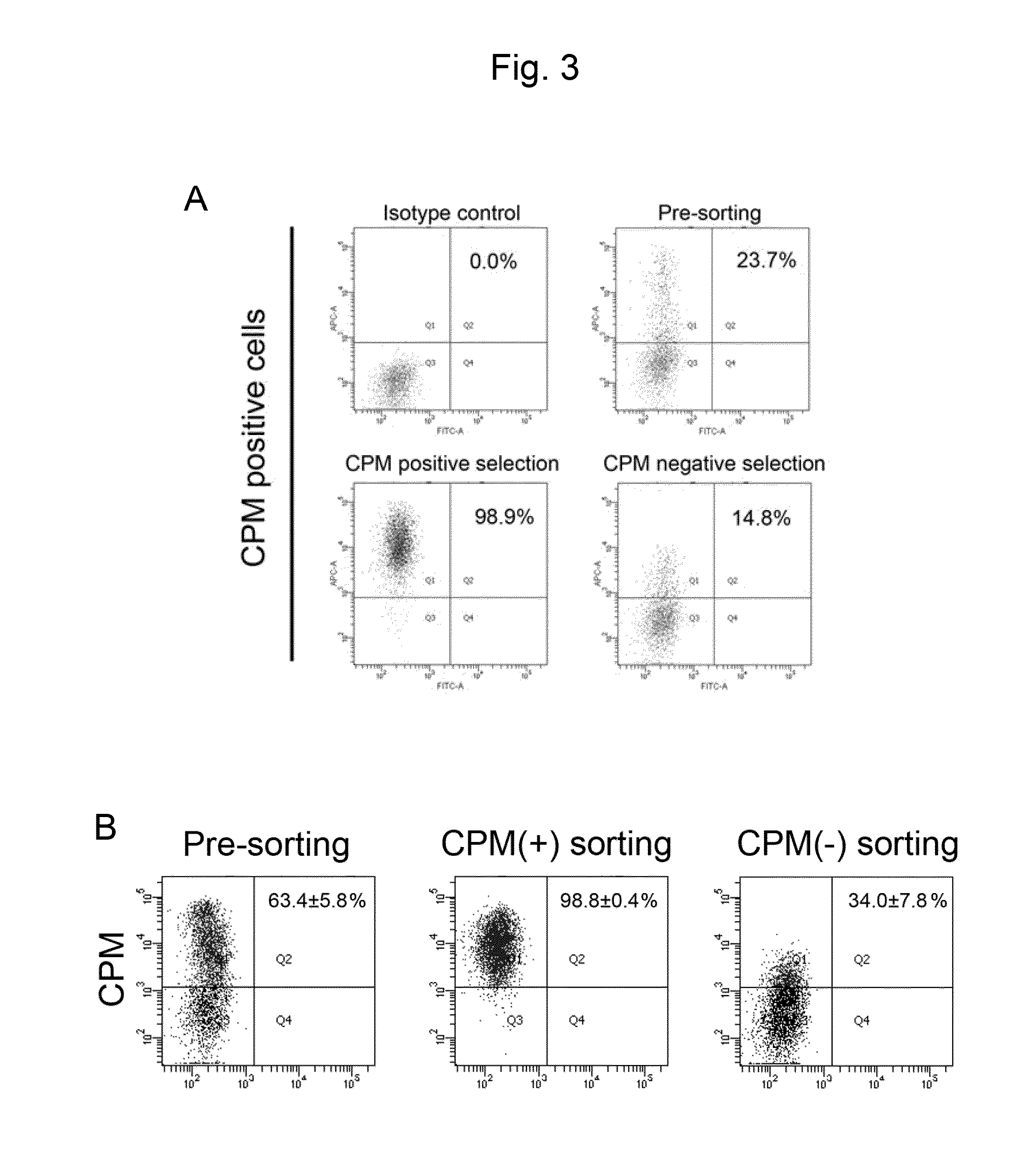Method for inducing alveolar epithelial progenitor cells
a technology of epithelial progenitor cells and induction methods, which is applied in the field of induction methods of alveolar epithelial progenitor cells, can solve the problems of no examples demonstrating the efficient induction of human pulmonary alveolar cells, and no radical treatment available for other pulmonary alveolar diseases
- Summary
- Abstract
- Description
- Claims
- Application Information
AI Technical Summary
Benefits of technology
Problems solved by technology
Method used
Image
Examples
examples
[0138]Hereafter, the present invention is described in greater detail with reference to the examples, although the technical scope of the present invention is not limited to these examples.
[iPS Cell Culture]
[0139]Human iPS cells (201B7) were provided by Professor Yamanaka at Kyoto University and cultured in accordance with a conventional technique (Takahashi K, et al. Cell, 131: 861-872, 2007). In accordance with the method described in Mae S., et al, Nat. Commun., 4: 1367, 2013, according to a gene knock-in technique, SFTPC-reporter 201B7 was produced by introducing an EGFP sequence into a site downstream of the SFTPC initiation codon of the human iPS cells (201B7).
[Induction of Alveolar Epithelial Progenitor Cells]
[0140]FIG. 1 shows a scheme for producing alveolar epithelial progenitor cells from pluripotent stem cells such as iPS cells.
[0141]The alveolar epithelial progenitor cells were induced by detaching human iPS cells with the use of Accutase, seeding the cells in a 24-well ...
PUM
| Property | Measurement | Unit |
|---|---|---|
| concentration | aaaaa | aaaaa |
| concentration | aaaaa | aaaaa |
| concentration | aaaaa | aaaaa |
Abstract
Description
Claims
Application Information
 Login to View More
Login to View More - R&D
- Intellectual Property
- Life Sciences
- Materials
- Tech Scout
- Unparalleled Data Quality
- Higher Quality Content
- 60% Fewer Hallucinations
Browse by: Latest US Patents, China's latest patents, Technical Efficacy Thesaurus, Application Domain, Technology Topic, Popular Technical Reports.
© 2025 PatSnap. All rights reserved.Legal|Privacy policy|Modern Slavery Act Transparency Statement|Sitemap|About US| Contact US: help@patsnap.com



